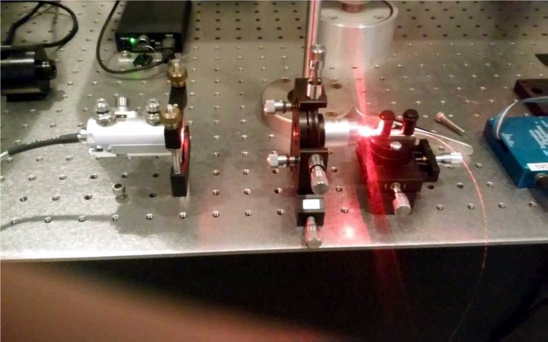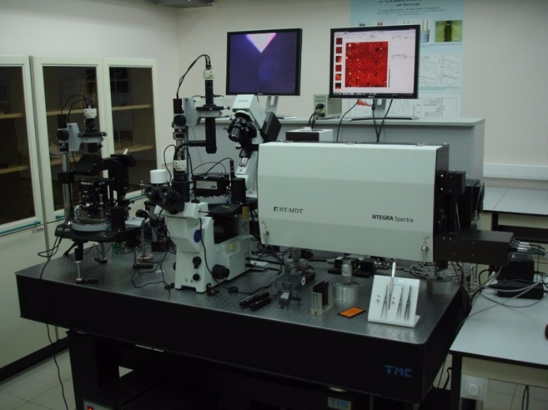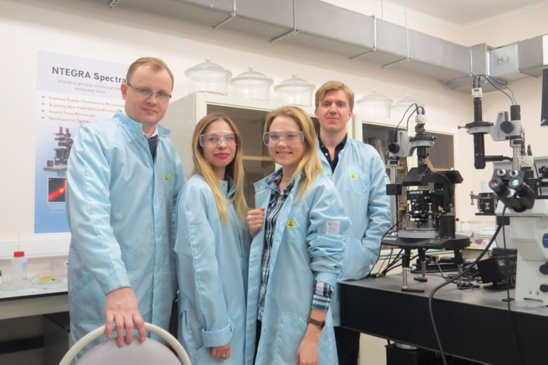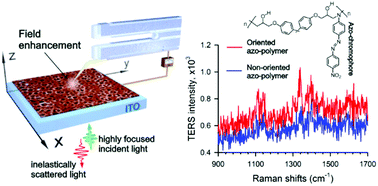R&D: Ultrahigh Density Optical Storage Researched at Kazan University
Expected storage capacity in case is up to 1Pb/dm2 which is approximately equal to one million standard DVDs.
This is a Press Release edited by StorageNewsletter.com on December 5, 2016 at 2:58 pmThe ever-growing demand for storage devices stimulates scientists to find new ways of improving the performance of existing technologies.
Kazan Federal University R&D staff
According to current estimates, dozens of zettabytes of information will need to be placed somewhere by 2020. New physical principles must be found, the ones that facilitate the use of single atoms or molecules as basic memory cells. This can be done with the help of lasers. However, the existing methods of optical storage are limited to the diffraction limit (~500 nm), so the respective recording density is roughly ~1Gb per square decimeter.
The limitation can be circumvented by the use of highly localized lasers that can manipulate the spatial orientation of single molecules. The expected storage capacity in this case is up to 1Pb/dm2 which is approximately equal to one million standard DVDs.
Regulating radiation beyond the diffraction limit with the help of optical nanoantennas and nanoresonators is the basis for three current research areas – refractory plasmonics, organic photovoltaics, and near-field optical memory. All of them are in development at the Nano Optics Lab of Kazan Federal University (headed by Sergey Kharintsev, associate professor).
Thanks to subdiffraction localization and field enhancement of light single molecule detection technologies develop rapidly. Dr. Kharintsev’s team has used this approach for near-field optical recording. Their research appeared in Nanoscale in November 2016. The authors proposed a new principle of optical storage based on tip-enhanced Raman scattering effect.

Localization of laser light is provided by an optical nanoantenna that is illuminated by a focused laser beam with radial and azimuthal polarization. This approach was developed on the basis of optical anisotropy of azo-dye polymer films (published in ACS Photonics). The azo-dyes are orientated perpendicularly to the polarization direction under polarized light. This has proven to be a tricky result to achieve because near-field polarization depends on the geometry and material of the optical antenna (see Physical Review).
Switching between radial and azimuthal polarization capacitates the recording of optical information in the azo-dye absorption band and reading beyond that band. The switching speed depends on the local mobility of the dyes in glassy environment – a parameter that for polymer films is critically dependent on their thickness. The team plans to create a prototype of organic near-field optical memory of up 1Pb/dm2 density. The following advances in subdiffraction technology will be linked to laser beams with orbital momentum – such research may further down the road help additionally increase storage density.

Optical disks with petabit capacity will majorly change the efficiency and productivity of cloud services and data centers and disrupt the global storage market. The development of big storage is linked with energy-independent high-speed memory technologies that aim to unite the advantages of random access memory and archive memory. Alternative memory types, such as quantum memory, spin-transfer torque memory, memristors, and ferroelectrical memory, are all still far from practical use.
Article :
Near-field Raman dichroism of azo-polymers
exposed to nanoscale dc electrical and optical poling
Nanoscale has published an article written by Sergey S. Kharintsev, Department of Optics and Nanophotonics, Institute of Physics, Kazan Federal University, Kremlevskaya, 16, Kazan, Russia, and Institute of Perspective Technologies, Tatarstan Academy of Sciences, Baumana, 20, Kazan, Russia, Alexandr I. Fishman, Department of Optics and Nanophotonics, Institute of Physics, Kazan Federal University, Kremlevskaya, 16, Kazan, Russia, Semion K. Saikin, Department of Chemistry and Chemical Biology, Harvard University, 12 Oxford Street, Cambridge, USA, and Department of Theoretical Physics, Institute of Physics, Kazan Federal University, Kremlevskaya, 16, Kazan, Russia, and Sergei G. Kazariane, Department of Chemical Engineering, Imperial College, London, UK.
Abstract: “Azobenzene-functionalized polymer films are functional materials, where the (planar vs. homeotropic) orientation of azo-dyes can be used for storing data. In order to characterize the nanoscale 3D orientation of the pigments in sub-10 nm thick polymer films we use two complementary techniques: polarization-controlled tip-enhanced Raman scattering (TERS) microscopy and contact scanning capacity microscopy. We demonstrate that the homeotropic and planar orientations of the azo-dyes are produced by applying a local dc electrical field and a resonant longitudinal optical near-field, respectively. For a non-destructive probe of the azo-dye orientation we apply a non-resonant optical near-field and compare the intensities of the Raman-active vibrational modes. We show that near-field Raman dichroism, a characteristic similar to the absorption dichroism used in far-field optics, can be a quantitative indicator of the 3D molecular orientation of the azo-dye at the nanoscale. This study directly benefits the further development of photochromic near-field optical memory that can lead to ultrahigh density information storage.”














 Subscribe to our free daily newsletter
Subscribe to our free daily newsletter
